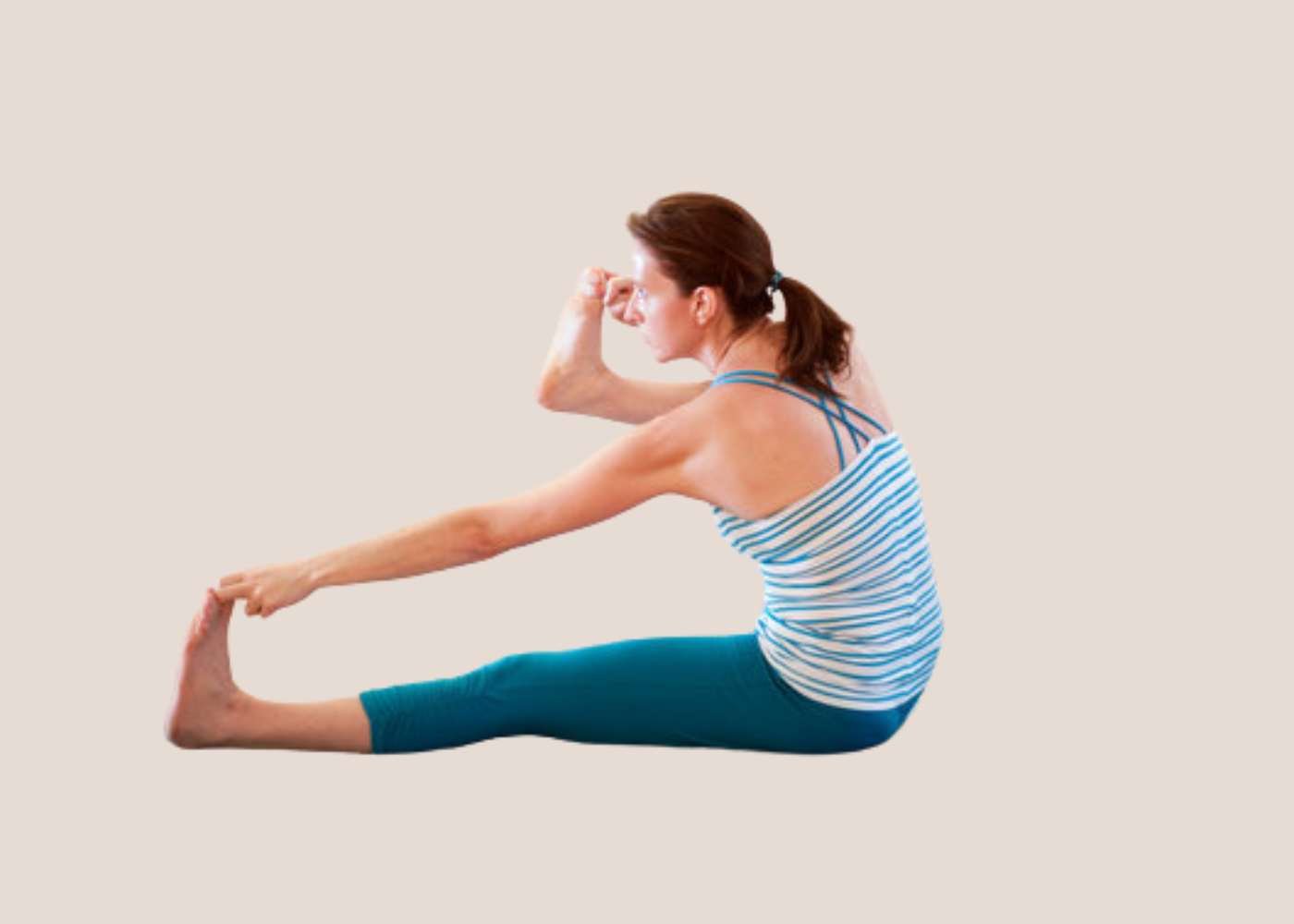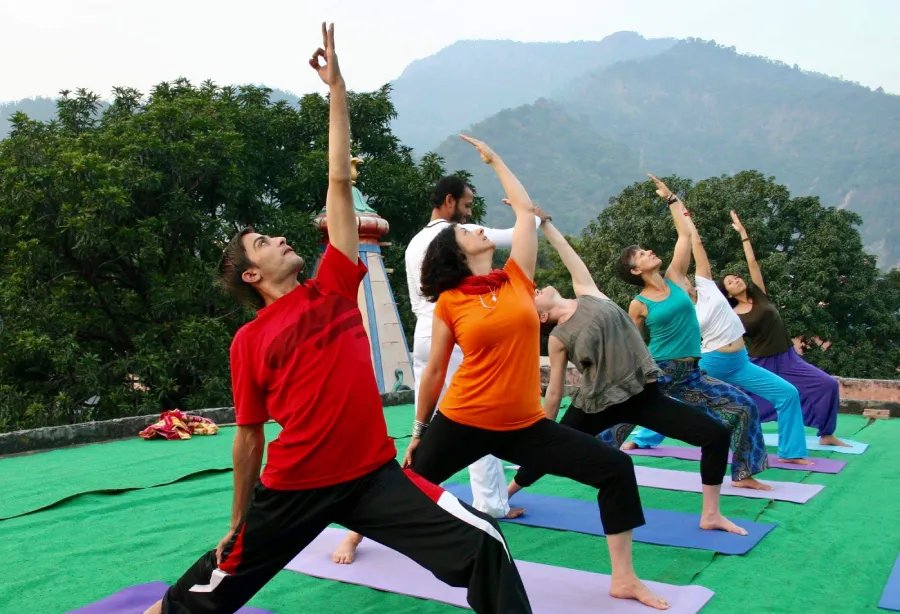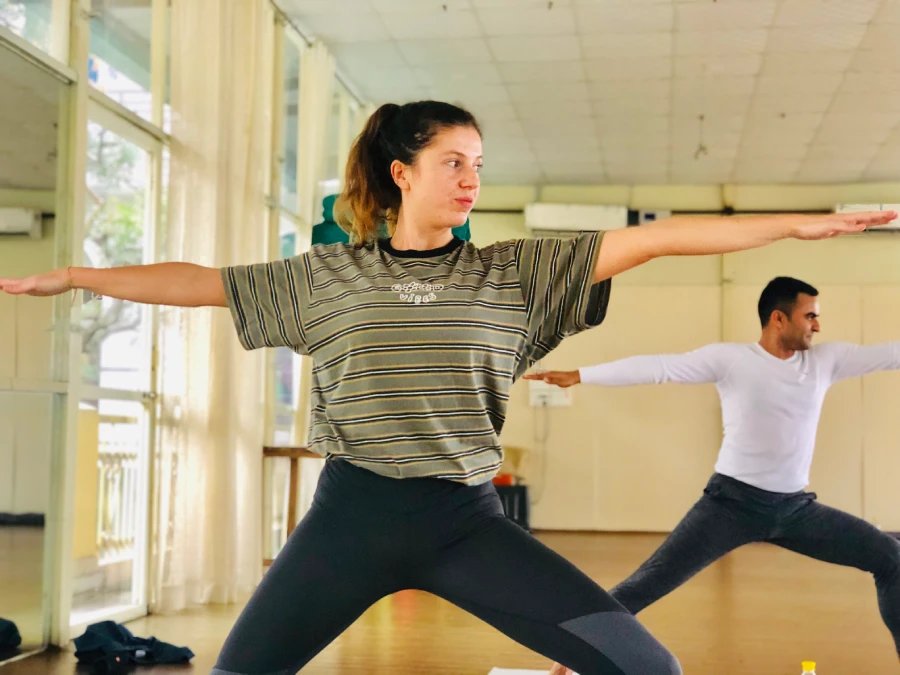Akarna Dhanurasana Often called the Archer’s Pose, A is a profound yoga stance that gets its name and inspiration from the Sanskrit terms “Akarna,” which means “ear,” “Dhanur,” which means “bow,” and “Asana,” which means “pose.” This position represents strength, focus, and pushing oneself to the maximum. It is similar to the posture of an archer poised to release an arrow. It seeks to prepare the practitioner for meditation by cultivating mental resilience and concentration in the spiritual sphere. In the physical realm, it stretches and strengthens the arms, legs, and back. Let’s examine the techniques, advantages, and safety measures of Akarna Dhanurasana.
Steps to Perform Akarna Dhanurasana (Arhcer’s Pose)
1. Start in Dandasana (Staff Pose):
With your legs extended straight in front of you, take a seat on the floor. Maintain a straight spine and place your hands next to your hips. The first step into Akarna Dhanurasana is the Dandasana, often known as the Staff Pose.
2. Prepare Your Legs and Arms:
Bring the heel closer to your left buttock by bending your left knee. Make certain that your right leg stays straight.
Grab the big toe of your right foot with your right hand as you extend your reach forward. With your thumb pressing down on the nail, use a yogic grasp by encircling the toe with your middle and index fingers.
3. Lift and Stretch:
Take a deep breath in, then exhale while raising your right leg off the ground and straightening it as much as you can. At the same time, tilt your head to gaze over your left shoulder and simultaneously extend your left arm back as though you were pulling the string of a bow. While it’s not necessary to hold anything, the left hand should resemble the motion of pulling back on a bowstring.
4. Hold the Pose:
As long as it is comfortable, maintain the posture, paying attention to your balance and flexibility. Inhale slowly and deeply. Start with a goal of 30 to 1 minute, and then progressively extend the duration of the stance.
5. Release and Repeat:
Gently exhale, drop your right leg to the floor, and then come back to Dandasana to release. Next, switch to the other side and repeat the stance while extending your right arm back and holding onto your left foot with your left hand.
Benefits of Akarna Dhanurasana
- Enhances Flexibility: This pose increases total flexibility by extending the back, arms, and legs.
- Strengthens Muscles: It fortifies the muscles of the back, abdomen, shoulders, arms, and legs.
- Improves Focus and Concentration: Maintaining equilibrium and accuracy is essential for enhancing mental focus and concentration.
- Stimulates Abdominal Organs: Stretching has the effect of stimulating the abdominal organs, which helps with digestion and eases moderate digestive problems.
- Promotes a Sense of Balance: Maintaining the posture’s physical balance encourages mental stability, which in turn fosters serenity and clarity.
Precautions and Contraindications
- Avoid if you have injuries: This posture should not be done by someone who has a chronic or recent injury to their back, arms, or legs.
- Hernia or High Blood Pressure: People who have high blood pressure, a hernia, or any other cardiovascular condition should practice carefully or not at all.
- Pregnancy: Before attempting this posture, especially in the later stages of pregnancy, pregnant women should speak with a healthcare physician.
- Start Slowly: To avoid putting too much tension on your muscles, start with a gentle stretch and progressively deepen it.
Engaging in Akarna Dhanurasana practice can yield numerous benefits, including psychological and physical advantages. Just as in any other yoga practice, it’s important to pay attention to your body and not push yourself too hard. Your archer’s position may become stronger, more stable, and more accurate with repeated practice, reflecting the attributes of the concentrated archer it imitates.
Learn to know more about yoga poses so you can visit the yoga school and join 200 hour yoga teacher training in rishikesh and 200 hour yoga teacher training in bali




